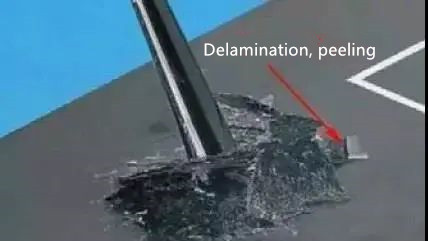Continuing from the previous topic – nylon toughening, why should it be macroscopically compatible but not microscopically compatible?
☞Macroscopically compatible

After toughening, the composite material must be a whole, and the product must not be delaminated or have some injection defects, so that it is a complete composite material.
☞ Microscopic compatibility is not allowed
Because nylon toughening is to let the elastomer to form tiny particles dispersed in the nylon, in the case of absorbing external impact, this elastomer can produce deformation and absorb the impact energy.
In the case of low temperature, it can better provide a flexible retention, so microscopically it cannot be fully compatible, if it is fully compatible, then there will be no tiny particles dispersed, and when it is impacted by the outside world, its energy will not be absorbed, so it will not play a role in toughening.











